The year 2011 marks the centenary of the first full translation of the Bible into the Korean language. We hope the information on our earliest translations to the most current ones offers insights into the history of Bible translation in Korea, and illustrates our ongoing efforts to present God’s Word in ways meaningful and relevant to the young and the old; the churched and the unchurched; the seekers and the like.
예수셩교젼셔 (The Corean New Testament, 1887)


This is the first New Testament translated and published in the Korean language. The translation was led by the Scottish missionary, Rev. John Ross with the team consisting of John Macintyre and Korean translators, Eung Chan Lee, Sang Ryun Soh, Seong Ha Lee, and others. They adhered to the principle of doing a strictly literal translation appropriate to the meaning of the original text and Korean idiomatic expressions. Many important church terminology of this translation are still in use till today.
셩경젼셔 (The Korean Bible, 1911)

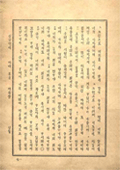
This is the very first translation of the entire Bible into Korean, and is the official translation by the Board of Translators, made up of mainly missionaries from abroad. Their aim was to come up with a translation that could be understood by the commoners, the translators tried to keep their work simple enough to be understood by the uneducated and yet stylish enough to be accepted by the scholarly.
성경개역 (Revised Version of the Korean Bible, 1938)

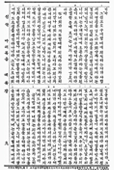
This is the revision by the Board of Revisers that was formed immediately after the publication of The Korean Bible. The revision of the Old Testament took 26 years and the New Testament 12 years for completion. While preserving the stylish tradition of The Korean Bible (1911), a rigid literal translation approach was adopted for the revision process. They also reflected the significant changes in Korean orthography.
성경전서개역한글판 (Korean Revised Version, 1952/1961)


This revision of the Revised Version of the Korean Bible was completed to reflect the new orthography while preserving the translated text. It was revised again in 1961 to further polish the text by applying changes in orthography and word spacing principles.
성경전서개역개정판 (New Korean Revised Version, 1998)

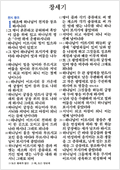
This revised version is the authorized liturgical Bible that has been published in 1998 after 15 years of hard work by the Revision Committee consisting of scholars commissioned by 17 church denominations and collecting the feedback from more than 1,600 church leaders in Korea. The revisers followed the principle of maintaining the style and characteristics of the Korean Revised Version and limiting the revision to the minimum. Passages revised are texts carrying words that are not in accord with the new orthographic principles; texts where the meaning is unclearly delivered; and texts with outdated archaic or difficult words. All such passages were revised so that they could be clearly understood by contemporary readers.
신약전서새번역 (Korean New Testament, New Translation, 1967)
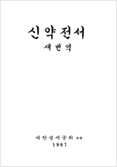
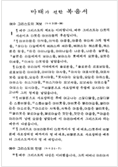
This is a translation by Korean scholars from the original languages into contemporary Korean, and targets younger readers who are below the age of 30. The translators tried to avoid doing a literal translation or a free translation, and aimed to come up with a translation that could be easily understood by anybody reading the text.
공동번역성서 (Common Translation of the Holy Bible, 1977/1999)
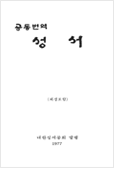
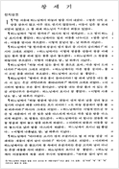
This is an interconfessional translation by both the Protestant and the Catholic scholars. The principle the committee was to come up with a translation for the unchurched, and to refrain from using terms that are owned by only the Protestant or the Catholic church. For their translation, they adopted dynamic equivalence approach. In 1999, the revised edition of the Common Translation of the Holy Bible was published after correcting some outdated spellings and making a few essential amendments to the text.
성경전서표준새번역 (Revised New Korean Standard Version, 1993)
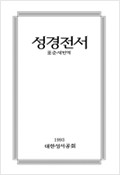
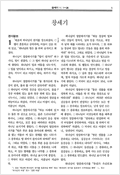
This new translation finally published after ten years of translation work by 6 Korean language scholars and 16 theologians commissioned by each Protestant denomination, and consultation with 980 church leaders. The translation committee sought to take a middle road by adopting merits of literal and dynamic equivalence translations while avoiding their demerits. Their goal was to produce an easy, contemporary language translation that can be used for both liturgy and church education. Although it has accepted main terms of the Revised Version, some pronouns appearing often in school textbooks have been modified accordingly, and use of sexually discriminative expressions have been avoided. This translation was revised and became 성경전서표준새번역개정판 (Revised New Korean Standard Version) in 2001. Its Korean name was changed to 성경전서새번역 in September 2004.